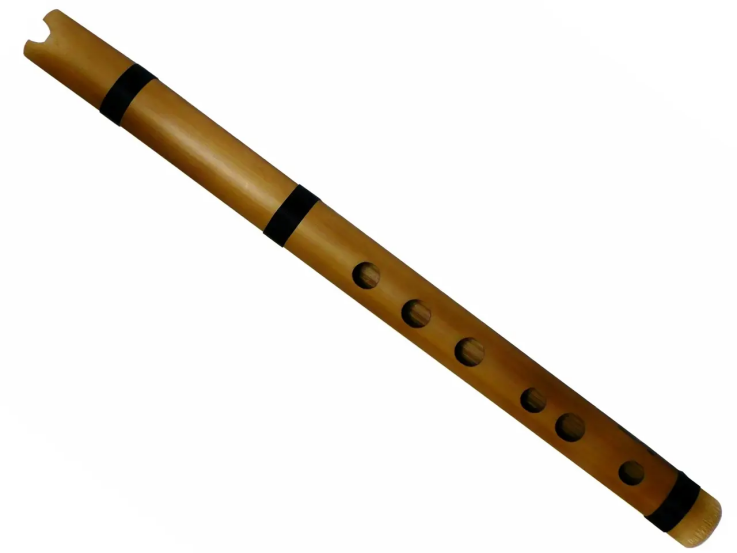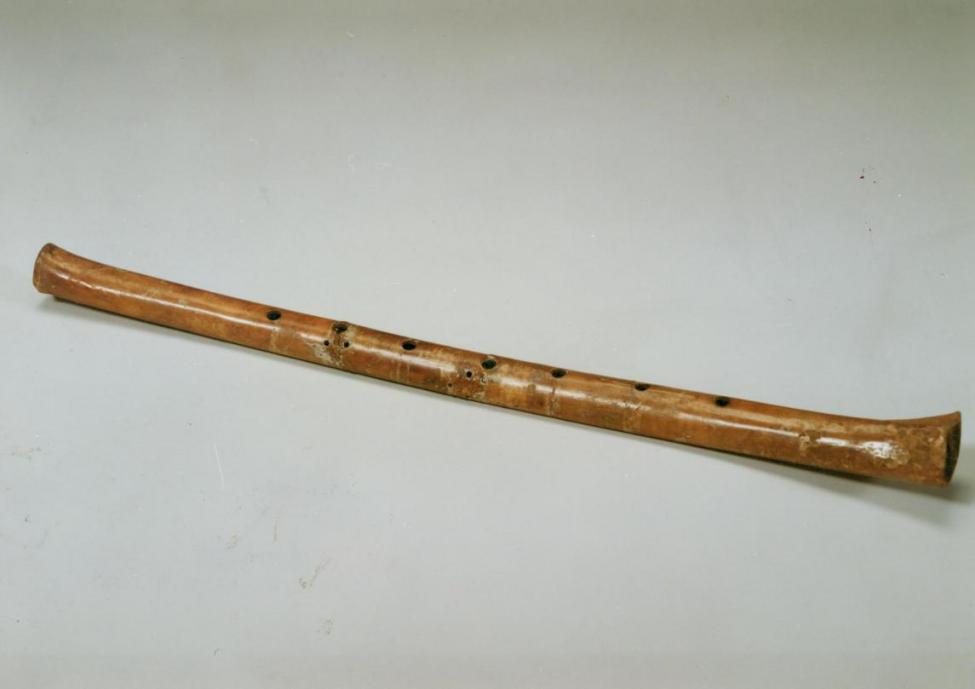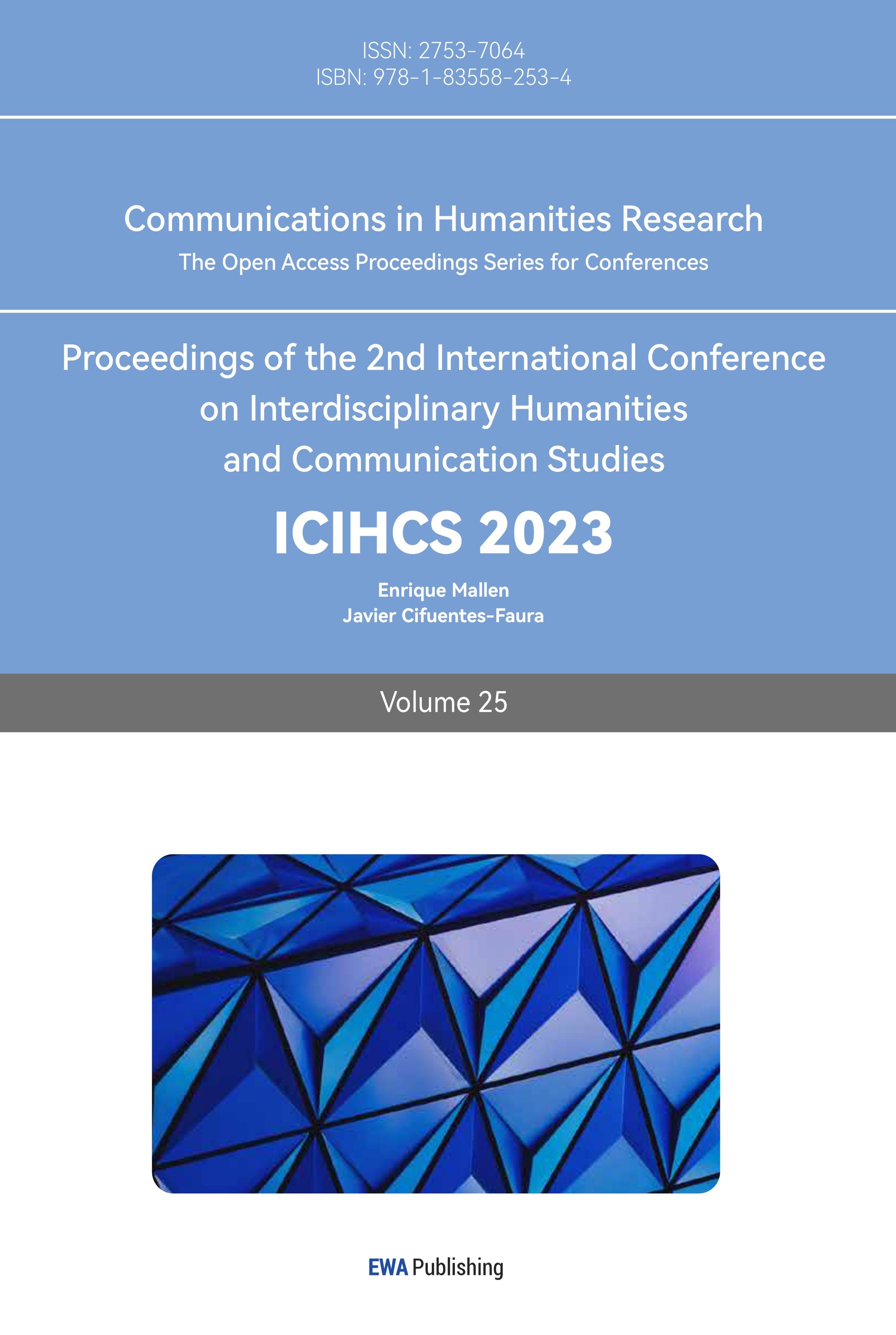1.Introduction
The Last of the Mohicans, which depicts a picture of an endless steppe with several Mohicans, riding horses and chasing after their prays, is popular on the internet and among the public. It is heavenly, haunting, and piercing. Quena's sound is so unique that none of the other flutes has a similar voice. The Last of the Mohicans reflects the Native Americans' tribe music style which is played by Indian instruments. Indian instruments mainly include the flute, clarinet, and drum. The panpipe is made of bamboo or reed pipes and comes in various sizes. It is an ancient musical instrument that has been popular since the Inca Empire (1450AD-1532AD). The pottery, gold, and silver products, and textiles produced by Inca are also famous. Their pottery is a practical art form that adopts the shapes of humans and various animals and is painted with various colored patterns. The processing of gold and silver products has reached a high level. There are two types of flutes: horizontal flute and vertical flute: the horizontal flute is similar to the Chinese flute but without a flute membrane. The clarinet is similar to the European treble clarinet, with a sharp tone. Their timbre is easily integrated with the panpipe.
In comparison, Tibetans also had their typical Aerophone, Eagle bone flute. The eagle bone flute has a history of over 1700 years and is named after the wing bones of Accipitridae animals (including eagles). It was once popular in the pastoral areas and appeared during the nomadic era. The early eagle bone flute was made by nomads by simply drilling some holes and was only used for them to relax their body and mind during grazing. As modern cities widely spread, they had a dramatic impact on the nomadic tribes. Taking the Tibetan eagle bone flute and the Native American Quena as examples, this paper aims to analyze the similarities and differences in appearance, performing technique, and special customs of the two national instruments. According to data-based research, no previous study on this topic has been found.
2.Literature review
2.1.Native American and Tibetan music instruments
Native Americans are now mainly living in the Andes, where three types of culture gathered; Andes plateau culture, Africa-America culture, and Mestizo culture. For financial purposes, Native Americans have no longer stayed in mountainous areas since the 21st century, but began spreading towards different areas. Before being invaded by the Mexicans, the four main kinds of musical instruments that Native Americans used were Idiophone, Membranophone, and Aerophone, while Chordophone wasn't being used [1]. It's almost inevitable that everything's heritage will have changes, dramatic or tiny, and so do the instruments of Native Americans. Although many of them can still be seen nowadays, the ways of playing or performing them have changed. Conquerors did help to spread those instruments, but there were negative brought on them, especially on those metal instruments because of the value of the material itself. The act of Spanish conquerors plundering precious metals directly led to the sharp decline or even disappearance of precious metal instruments such as gold and silver in traditional instruments. The Aerophone, as the most important part of the Native American instruments, has been popular for a long time and it can be traced back to pre-Columbian America. The Native Americans of ancient South America had various types of flutes, clarinet being the most important one.
Tibetan, as one of the 56 nationalities in China, has a long history. It created abundant local culture and left great masterpieces in music, sculpture, opera, and so on. There are three main types of flutes popular in Tibet, eagle bone flute, iron flute, and bamboo flute. The specifications of bone flutes vary, with varying lengths and thicknesses as well, and are usually shorter and thinner than bamboo flutes. Flutes have their own rule of playing for Tibetans. The flute can only be played after the beginning of spring every year. It is not suitable to play it in winter, otherwise, hibernating creatures will mistakenly think that spring has arrived [2].
2.2.Quena and Eagle Bone Flute
In The Last of the Mohicans, Quena is the main instrument played in the song. Each Quena has its different pitch, and the difference in pitch will lead to an impact on specific structures such as the size of the flute body and the number of sound holes. The piper needs to use his fingers to block the sound hole, create different lengths of air columns inside the flute, and then emit different sounds of different heights. Sometimes they apply beeswax to the mouthpiece to narrow it down and make it easier to play.

Figure 1: Quena [3].
In Tibet, the eagle bone plays an important role in their music history. When the eagle gets old, it naturally dies in stone cliffs or mountain forests. After people discover its body, they take off its wing bones, remove the carrion, place it in a cool and dry place, or hang it at the chimney's mouth. After bone marrow oil penetrates the bone, the wing bones become slightly yellow, and the eagle bone flute can be made. The pipers are usually young males. When they get old, they are less likely to play the eagle bone flute. What's more, none of them will write down what they have just played and they don't have a certain type of music score. That means the elder will just tell the new generations how to play it instead of writing it down, leading to some probable tiny changes after centuries' heritage but will not affect the essence of the musical instrument itself.

Figure 2: Eagle bone flute [4].
3.Comparison between Quena and Eagle bone flute
3.1.Outlook
Quena is brown and has a long cylindrical shape, with a groove at the top and neatly arranged sound holes. There are two types of grooves, U-groove, and V-groove. Quena can be made from diverse materials like metal, wood, and bone.
Eagle bone flute, generally, is about 25 centimeters long. The mouth on the upper side of the pipe body is sealed, leaving only a narrow gap as the blowing hole. The back of the pipe end is diagonally settled with a sound hole, and there are six sound holes in the lower part of the front of the pipe body [5].
3.2.Culture
The common characteristics of Native Americans in the Andes region are honesty, law-abiding, and perseverance. They are always kind to others. This was taught by their “Mother Earth”. The belief in "Mother Earth" has always been active in the philosophy of Native Americans. They consider themselves as the descendants of nature, receiving the gifts of nature. Living in harmony with all things in the world is their highest belief. For Native Americans, all kinds of Aerophones can solely be played by males [6].
Tibetans are nomads, who love to fight. According to historical sources, they view death from illness as a shame and death from war as pride. Moreover, there is no correlation between what religion one believes in and whether one's everyday habits are warlike or not. It has a greater relationship with the environment, culture, and national character. But their music is related to religion, and part of their music has a certain kind of correlation to fighting and hunting. Why it is made of Accipitridae animals' bones instead of other animals' bones? After Tibetans die, being buried underground is not the highest standard of etiquette, instead, lying the body in a specific place to enable the Accipitridae animals to eat the carrion is. The elders will make a special ceremony to gather them, and only the vulnerable people can receive such special treatment. Some of the people are not willing to receive it, fearing that their soul is not pure enough to call animals, especially eagles. Therefore, the Accipitridae animal is considered a sacred bird that cannot be captured or harmed [7].
3.3.Sound
The characteristic of Quena's performance is that it cannot only produce rough and wild sounds but also make the timbre tremble and slide slightly, expressing the delicate emotions deep inside. Quena has a beautiful timbre and is widely used in various religious and secular music, including Inti Raymi. Inca songs have their characteristics and special melodies, so when a man plays the flute for his lover, he can hint and express his hopes, demands, and emotions for her. Sometimes, he can also summon his lover from afar through the sound of the flute. As a purely chromatic solo instrument with a range of three octaves, its performance often involves complex techniques and rich expressive power.
The playing method of the eagle bone flute is different from traditional bamboo flute. Both the eagle bone flute and the iron flute are played vertically, with both hands holding the flute. The eagle bone is relatively hard, coupled with a thicker tube body and no flute membrane, so its overtones are very few, and the sound is clearer than that of a bamboo flute. In addition, the pitch control of the eagle flute is also freer for flutes and bamboo flutes. When the eagle bone flute is played on high notes, it is similar to the eagle's voice in the air, and the sound travels far [7-8].
4.Conclusion
This essay conducts comparison research between Native American and Tibetan musical instruments taking the Quena and Eagle bone flute as examples, and displays the difference between them from the aspect of outlook, culture, and sound. Results show that the two kinds of flutes demonstrated in this essay have quite different outlooks, different timbres, and tones, but similar cultural backgrounds and performing conditions. At present, this essay lacks information from on-the-spot investigations, due to the limited time. In the future, more research will be done to accomplish an ideal composition.
References
[1]. Wu Xinwei. A Brief Introduction to Native American Musical Instruments in Peru [J]. Journal of Tianjin Conservatory of Music, 2013 (02): 63-71+121.
[2]. Tian Liantao. Traditional Tibetan Musical Instruments (VI) [J]. Musical Instruments, 1990 (04): 10-14.
[3]. The history and legends of Gonardi that you don't know. (2023). https://www.jianshu.com/p/eda11583ca45.
[4]. Eagle Flute: Musical instrument. (2023). https://baike.baidu.com/item/%E9%AA%A8%E7%AC%9B/3304061?fromModule=disambiguation&fromtitle=%E9%B9%B0%E7%AC%9B&fromid=5018274.
[5]. Xue Haiping. The application and characteristics of eagle bone Flute in Tibetan ethnic life in Qinghai [J]. Folk Music,2010(04):8-9.
[6]. Tian Zichuan. Analysis of contemporary Indian Gaena Flute and its musical Form Characteristics -- Taking Indian music "The Fleeting Eagle" as an example [J]. Yellow River, 2021 (6): 48-51. DOI: 10.19340 / j.carol carroll nki HHZS. 2021.06.015.
[7]. Chen ziming. The general picture of the Andean highlands music [J]. Journal of Central Music College, 2001 (04): 32-41. DOI: 10.16504 / j.carol carroll nki cn11-1183 / j. 2001.04.009.
[8]. Han Baoqiang. A Study on Chinese Tajik Eagle Flute System [J]. Culture and Arts Research, 2010,3(05):93-101.
Cite this article
Bi,W. (2024). Comparison Between Native American and Tibetan Musical Instruments —Taking Quena and Eagle Bone Flute as Examples. Communications in Humanities Research,25,231-235.
Data availability
The datasets used and/or analyzed during the current study will be available from the authors upon reasonable request.
Disclaimer/Publisher's Note
The statements, opinions and data contained in all publications are solely those of the individual author(s) and contributor(s) and not of EWA Publishing and/or the editor(s). EWA Publishing and/or the editor(s) disclaim responsibility for any injury to people or property resulting from any ideas, methods, instructions or products referred to in the content.
About volume
Volume title: Proceedings of the 2nd International Conference on Interdisciplinary Humanities and Communication Studies
© 2024 by the author(s). Licensee EWA Publishing, Oxford, UK. This article is an open access article distributed under the terms and
conditions of the Creative Commons Attribution (CC BY) license. Authors who
publish this series agree to the following terms:
1. Authors retain copyright and grant the series right of first publication with the work simultaneously licensed under a Creative Commons
Attribution License that allows others to share the work with an acknowledgment of the work's authorship and initial publication in this
series.
2. Authors are able to enter into separate, additional contractual arrangements for the non-exclusive distribution of the series's published
version of the work (e.g., post it to an institutional repository or publish it in a book), with an acknowledgment of its initial
publication in this series.
3. Authors are permitted and encouraged to post their work online (e.g., in institutional repositories or on their website) prior to and
during the submission process, as it can lead to productive exchanges, as well as earlier and greater citation of published work (See
Open access policy for details).
References
[1]. Wu Xinwei. A Brief Introduction to Native American Musical Instruments in Peru [J]. Journal of Tianjin Conservatory of Music, 2013 (02): 63-71+121.
[2]. Tian Liantao. Traditional Tibetan Musical Instruments (VI) [J]. Musical Instruments, 1990 (04): 10-14.
[3]. The history and legends of Gonardi that you don't know. (2023). https://www.jianshu.com/p/eda11583ca45.
[4]. Eagle Flute: Musical instrument. (2023). https://baike.baidu.com/item/%E9%AA%A8%E7%AC%9B/3304061?fromModule=disambiguation&fromtitle=%E9%B9%B0%E7%AC%9B&fromid=5018274.
[5]. Xue Haiping. The application and characteristics of eagle bone Flute in Tibetan ethnic life in Qinghai [J]. Folk Music,2010(04):8-9.
[6]. Tian Zichuan. Analysis of contemporary Indian Gaena Flute and its musical Form Characteristics -- Taking Indian music "The Fleeting Eagle" as an example [J]. Yellow River, 2021 (6): 48-51. DOI: 10.19340 / j.carol carroll nki HHZS. 2021.06.015.
[7]. Chen ziming. The general picture of the Andean highlands music [J]. Journal of Central Music College, 2001 (04): 32-41. DOI: 10.16504 / j.carol carroll nki cn11-1183 / j. 2001.04.009.
[8]. Han Baoqiang. A Study on Chinese Tajik Eagle Flute System [J]. Culture and Arts Research, 2010,3(05):93-101.









